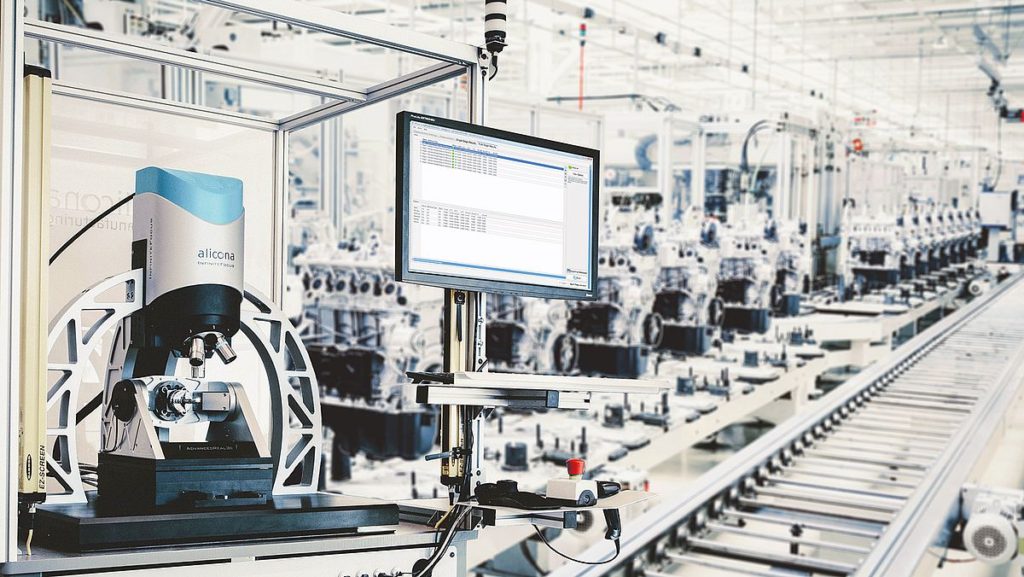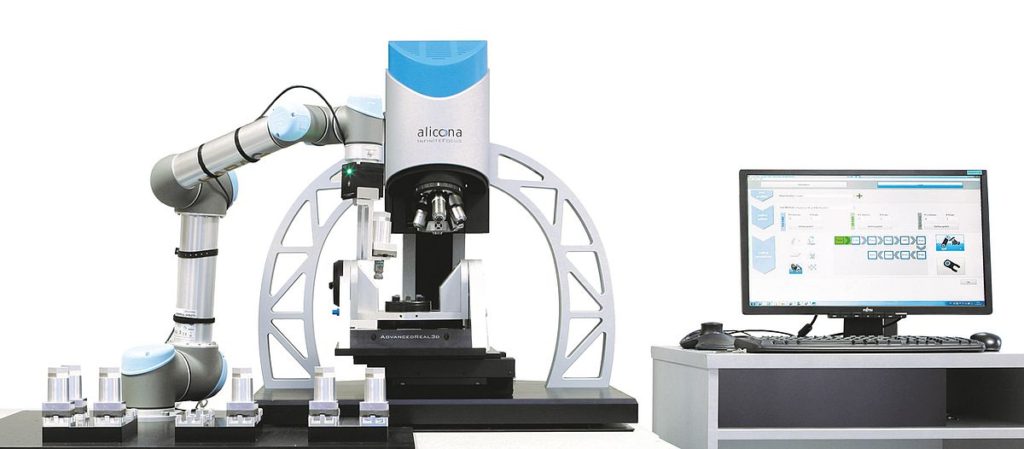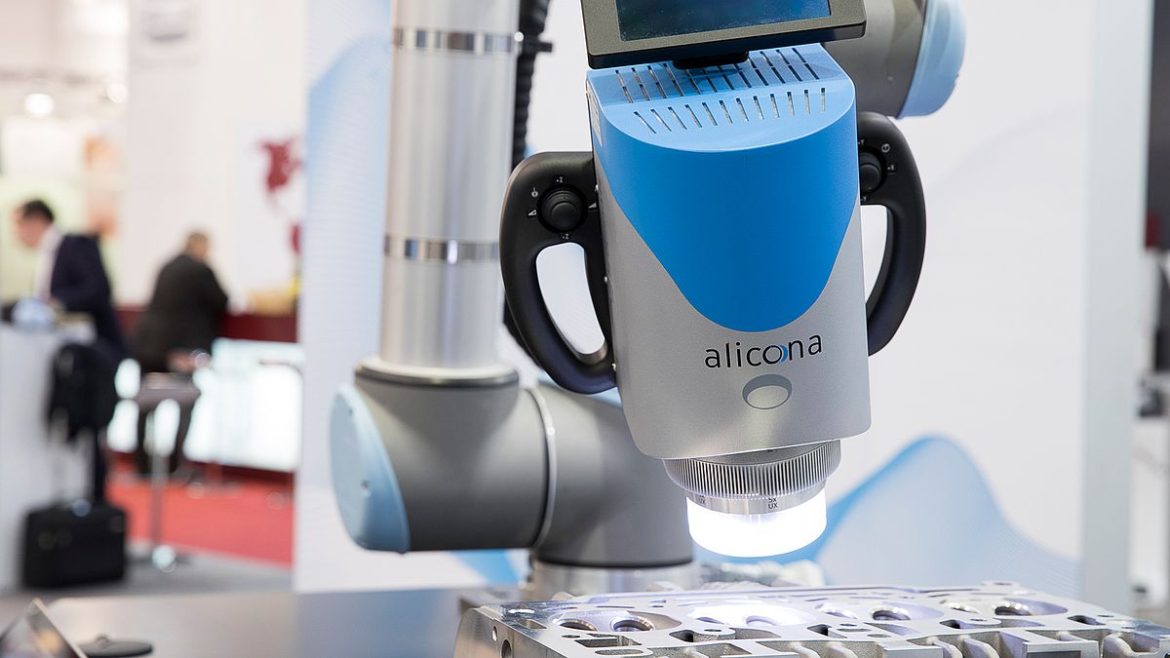When measurement technology becomes the smart eye for production
Today’s production managers require greater flexibility for small batch size production and tight tolerances. With our solutions for Smart Manufacturing, we demonstrate how Alicona metrology contributes towards profit.
On many production lines, the use of measurement technology for quality assurance is still realized off-line. Inspection equipment is often located at the end of a production chain and the quality of a component is only determined when it has already been manufactured. In the worst case, the component fails to meet the specified tolerances, making it necessary to move through all phases of the production cycle again. As a consequence, measurement technology is often perceived as an expensive, time consuming exercise with no added value. Smart Manufacturing moves quality assurance out from this unloved shadow behind the scenes into a new role, center stage. As an integral part of the production chain, it actively engages in manufacturing operations and corrects production steps when a single component does not meet the correct tolerances. As a result, faulty components are no longer produced; first parts are good parts.

Concept: 3D measurement technology as a smart eye
The use of measurement technology as an integral part of manufacturing is based on optimized communication and networking of all interfaces. Production systems, machines, and measurement technology form a closed loop in constant communication, which makes it possible to produce the first part directly as a good part. The integrated measurement technology is able to verify dimensions, tolerances, and surface quality even at a very early stage of production. If the measuring sensor detects that a component is faulty, this information is fed into the production circuit, which adapts accordingly. Measurement technology becomes the smart eye of production.
In order to implement Smart Manufacturing as an advanced production strategy, companies need fully automated measuring systems that can be used by any operator without prior knowledge of measurement technology. In addition, complex components with tight tolerances require optical, high-resolution measurement sensors that are compatible with production and provide traceable and repeatable measurements.
Alicona´s Focus-Variation offers the ideal platform for using optical 3D measurement technology in production, as it is combined with areal-based high-resolution 3D measurement sensors that can be flexibly integrated. All involved systems are digitized and linked using intelligent interface technology and the provided measurement solutions can be individually customized. This gives manufacturers real-time data on production processes, allowing them to intervene at an early stage. As a consequence, smaller batch quantities with closer tolerances can be produced to a higher level of quality and precision.
Implementation: Measuring, networking, and individualization
In order for Smart Manufacturing to work effectively, measurement sensors must be integrated into the production line. The metrology equipment must be both capable of networking with existing production systems and being expanded by the manufacturer, if necessary.
Integrating optical measurement sensors into production
Depending on the application, Alicona sensors can be integrated into production in a variety of ways. These are the most common ways of implementing “Smart Manufacturing”:
- The use of a standard measuring system combined with the “Automation Manager” interface. Measurement series are configured by an administrator in advance, and then started by the operator in production by pushing a button.
- Using collaborative systems, “Cobots”. The measuring sensor is mounted onto a mobile robot platform and can be positioned as needed, even for the measurement of components in the machine. The Cobot’s safety concept is built around the physical interaction between humans and robots, and makes conventional enclosures for robots obsolete. Collaborative systems respond to human movements by means of appropriate sensor technology and switch off automatically if there is a risk of injury.

Digitization and networking between production systems, machines, and measurement technology
The first step in applying Smart Manufacturing is integrating high-resolution optical measurement sensors. It is then necessary to ensure communication and networking between all the data and systems within the production chain. As a result, the measuring technology moves from a decoupled measuring room into the center of production, where complex measurements are executed quickly and easily. Measurement processes, which up to now have mainly been applied in a measuring room, are integrated into existing production planning and control systems (CIM – Computer Integrated Manufacturing), including ERP systems. Integration into the corresponding production programs is ensured through interfaces such as .net Remoting, Labview Interface, and a CAD CAM connection. All systems involved interact in a closed loop, making it possible to intervene in production at any time. Production measurement data enable manufacturers to plan and control production on a flexible basis, contributing to efficient company management.
The range of products offered by Alicona covers the entire spectrum: As a provider of high-resolution optical 3D measurement technology, we integrate measurement sensors into the production line and provide corresponding interfaces, including a CAD-CAM interface, for connecting to existing production programs. This allows production managers to achieve autonomous optimization of production and more efficient management of the company.
Measuring systems matched to user requirements
Alicona’s high-resolution optical 3D measuring systems can be extended by the user to meet specific requirements. This allows the manufacturer to adapt the measuring device to the individual production process and extend existing functionality. Customer plug-ins facilitate easy extended programming (“scripting”) or the implementation of specific, proprietary software programs and libraries. This allows manufacturers to integrate individual parameters and evaluation algorithms into Alicona standard products. That way, they can continue to develop Alicona systems to permanently extend and optimize quality assurance and expertise specific to their company.
Alicona Cobots combine a collaborative 6-axis robot and a robust optical 3D measurement sensor to deliver traceable and repeatable high-resolution measurements, even in production.
To know more, check Alicona.









